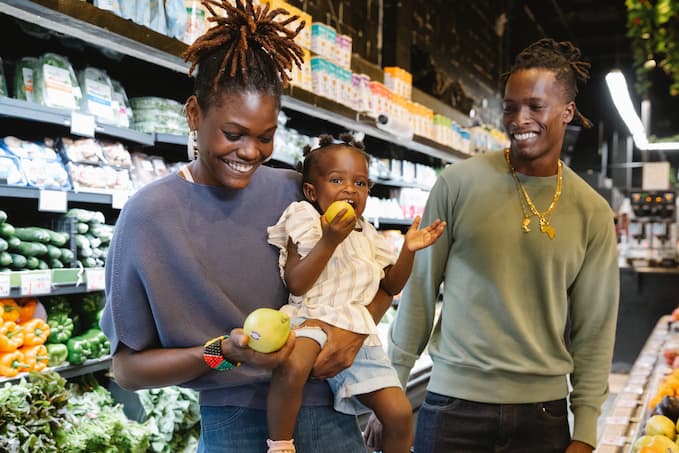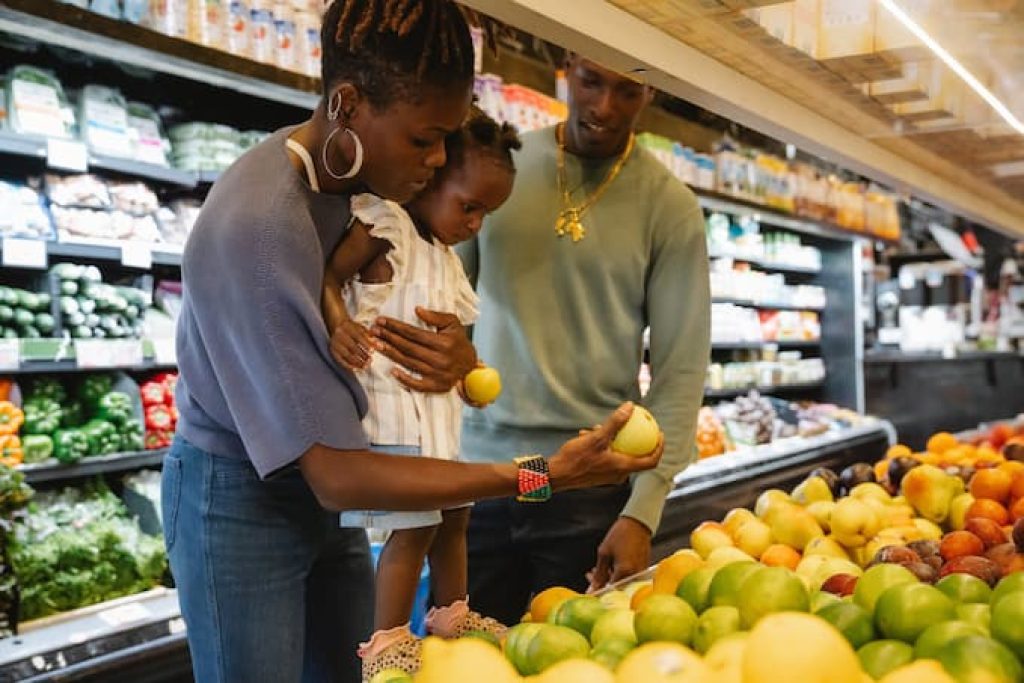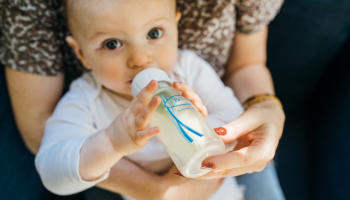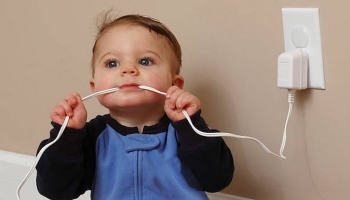
Grocery shopping with a baby can be a challenge for many parents. It can be overwhelming to navigate the store with a little one in tow while trying to get everything on the shopping list. However, with a few tips and tricks, grocery shopping with a baby can be a stress-free experience.
Firstly, it’s important to plan ahead and make a list of everything needed before heading to the store. This can save time and help avoid any unnecessary trips back to the store. It’s also helpful to choose a time to shop when the store is less crowded to avoid long lines and wait times.
Secondly, it’s important to bring along all the necessary supplies for the baby, such as diapers, wipes, and a change of clothes. Bringing along a baby carrier or stroller can also make it easier to navigate the store while keeping the baby close. By being prepared and organized, grocery shopping with baby can be a manageable task for any parent.
Choosing the Right Time
Grocery shopping with a baby can be a challenging task. It can be difficult to manage a fussy baby while trying to navigate crowded aisles and make important decisions about what to buy. One way to make the experience more manageable is to choose the right time to go grocery shopping with baby first.
For parents of newborns, it may be best to go to the grocery shop during the baby’s naptime. This can help ensure that the baby is well-rested and less likely to be fussy during the trip. It can also make it easier for parents to focus on their shopping without worrying about the baby’s needs.
For parents of older babies, it may be best to go to the grocery shop when the baby is awake and alert. This can provide an opportunity for the baby to interact with their surroundings and provide a distraction from the shopping experience. However, it is important to keep in mind the baby’s feeding and nap schedule to avoid any meltdowns during the rest of the trip.
It is also important to consider the age of the baby when choosing the right time to go grocery or shopping with a newborn. Newborns require more attention and may need to be fed or changed more frequently, while older babies may be more independent and able to entertain themselves for short periods of time.
Overall, choosing the right time to go grocery shopping with a baby can make the experience more manageable and less stressful for both parents and baby.
Preparing for the Trip

When grocery shopping with a baby, preparation is key. Here are a few tips to help make the trip as smooth as possible:
Make a Shopping List
Before leaving the house, it’s important to make a shopping list. This will help ensure that you don’t forget anything and can help you stay focused while in the store. Consider using a grocery cart app or a notepad on your phone to make the list easily accessible.
Pack the Diaper Bag
The diaper bag is an essential item when grocery shopping with a baby. Make sure it’s packed with all the necessary items, such as diapers, wipes, a changing pad, and a change of clothes. It’s also a good idea to bring a few toys or books to keep the baby entertained while in the store.
Plan for Feeding
If your baby is still breastfeeding, plan to nurse before leaving the house or bring a nursing cover with you. If your baby is bottle-fed, make sure to bring enough formula and bottles for the duration of the trip. It’s also a good idea to bring a few snacks for yourself in case you get hungry while in the store.
Consider Using a Video
If your baby is fussy or easily distracted, consider using a video to keep them occupied while in the store. This can be a lifesaver when you need to focus on shopping.
By following these tips, grocery shopping with baby can be a manageable task. With just a few items and little preparation, you can help ensure a successful trip.
Selecting the Right Store
When shopping with a baby, selecting the right grocery store can make all the difference. Here are some factors to consider when choosing a store:
Store Layout
Look for a store with wide aisles and a layout that is easy to navigate with a stroller or shopping cart. Avoid stores with narrow aisles or cluttered displays that may make it difficult to maneuver with a baby.
Product Selection
Choose a store that offers a wide variety of products, including baby food, diapers, and other essentials. Stores like Whole Foods and Target have a good selection of organic and natural products, while traditional grocery stores may have a larger selection of mainstream brands.
Convenience
Consider the store’s location and hours of operation. Look for a store that is close to home and has convenient hours that work with your baby’s schedule. Some stores, like Target, also offer curbside pickup or delivery options, which can be a lifesaver when shopping with a baby.
Amenities
Some grocery stores offer amenities like nursing rooms, changing tables, and free samples that can make shopping with a baby easier and more enjoyable. Whole Foods, for example, has a nursing room and changing table in their stores.
By considering these factors, parents can select a grocery store that meets their needs and makes shopping with a baby a more pleasant experience.
Transportation and Parking
When grocery shopping with a baby, transportation and parking can be a challenge. Here are some tips to make the experience as smooth as possible.
First and foremost, make sure your baby is secure in their car seat before driving to the store. This will ensure their safety during transportation to many grocery stores and make it easier to transfer them in and out of the car.
When it comes to parking, look for spots that are close to the entrance or parking lot and have enough space to comfortably open your car doors. If you have a stroller, make sure there is enough room to unfold it and maneuver it around the car.
If you can’t find a spot close to the entrance, consider parking farther away and using a baby carrier or sling to carry your little one. This will allow you to navigate the store more easily and avoid the hassle of pushing a stroller through crowded stores and aisles.
When using a shopping cart, make sure your baby is secured in their car seat or a carrier that is designed to attach to the cart. This will keep them safe and prevent them from falling or tipping over.
Overall, taking the time to plan ahead and ensure your baby’s safety during transportation and parking will make grocery shopping a more enjoyable experience for both you and your little one.
Baby Carrying Options
When grocery shopping with a baby, it’s important to have your hands free to carry groceries and push a cart. Carrying your baby in a carrier is a great option that allows you to keep your baby close and your hands free.
Baby Carriers
Baby carriers are a popular option for parents who want to keep their baby close while having their hands free. There are many different types of baby carriers available, including soft-structured carriers, mei tais, and ring slings. When choosing a baby carrier, it’s important to consider your baby’s age, weight, and your own comfort.
Soft-structured carriers are a popular option for parents who want a carrier that is easy to use and comfortable. They typically have padded straps and a waistband for added support and comfort. Mei tais are similar to soft-structured carriers, but they have long straps that can be tied in different ways for a custom fit. Ring slings are a one-shoulder carrier that uses a ring to adjust the length of the fabric.
Babywearing
Babywearing is the practice of carrying your baby in a carrier or wrap. It’s a great way to keep your baby close and your hands free. Babywearing has many benefits, including promoting bonding between parent and baby, reducing crying and fussiness, and allowing parents to be more active.
When babywearing, it’s important to choose a carrier or wrap that is comfortable for both you and your baby. Make sure the carrier or wrap is adjusted properly and that your baby is in a safe and secure position.
Wraps
Wraps are a popular option for parents who want a carrier that can be adjusted for a custom fit. There are many different types of wraps available, including stretchy wraps, woven wraps, and hybrid wraps.
Stretchy wraps are made from a stretchy fabric and are great for newborns and young babies. Woven wraps are made from a non-stretchy fabric and are great for older babies and toddlers. Hybrid wraps are a combination of stretchy and woven fabric and are great for babies of all ages.
Overall, there are many different, baby wearing and carrying options available for parents who want to keep their baby close while grocery shopping. Whether you choose a baby carrier, wrap, or babywearing, it’s important to choose a carrier that is comfortable for both you and your baby.
Using a Shopping Cart

When shopping with a baby, using a grocery cart can be a convenient way to carry both your groceries and your little one. However, it’s important to take some precautions to ensure your baby’s safety and comfort.
One option is to use a shopping cart hammock, which is a sling that attaches to the cart and provides a comfortable seat for your baby. Make sure to choose a hammock that is designed for shopping carts and follows safety standards. Always secure your baby in the newborn shopping cart hammock and keep a close eye on them while shopping.
Another option is to use a shopping cart cover, which is a fabric cover that fits over the cart’s handle and the infant car seat itself. This can protect your newborn baby from germs and bacteria that may be on the cart. Make sure to choose a cover that fits securely and is easy to clean.
When using a shopping cart with a baby, it’s important to keep the following tips in mind:
- Always buckle your baby into the cart or hammock to prevent them from falling or tipping over.
- Keep a close eye on your baby at all times and never leave them unattended in the cart.
- Avoid placing heavy items on top of your baby or the hammock.
- Use the cart’s safety strap if available.
- Choose a cart with a sturdy frame and wheels to prevent tipping or accidents.
By following these tips and using the right equipment, grocery shopping with baby can be a safe and stress-free experience.
Grocery Shopping with a Stroller
Grocery shopping with a baby can be a daunting task, but with the right equipment and preparation, it can be a breeze. One of the most important items for a parent to have when grocery shopping with a baby is a stroller.
When choosing a stroller for grocery shopping, it’s important to consider the size and weight of the stroller, as well as the storage capacity. A lightweight and compact stroller is ideal for navigating through crowded aisles, while a stroller with ample storage space can help parents carry all the necessary items for their baby.
When using a stroller for grocery shopping, it’s important to keep the stroller in sight at all times. This can be achieved by parking the stroller near the shopping cart or using a stroller lock to secure it to a stationary object.
Parents should also be mindful of the stroller’s maneuverability. A stroller with good maneuverability can make it easier to navigate through tight spaces and around corners. Additionally, a stroller with adjustable handles can provide added comfort for parents of different heights.
In conclusion, choosing the right stroller for grocery shopping can make a significant difference in the overall experience for parents with babies. By considering factors such as size, weight, storage capacity, and maneuverability, parents can make the most of their grocery shopping trip with their little one in tow.
Practical Tips for Shopping with a Baby
Grocery shopping with a newborn baby can be a daunting task, but with some practical tips, it can become a manageable and even enjoyable experience. Here are some tips to help parents navigate grocery shopping with a baby:
- Choose the right time: Pick a time when the store is less crowded, and the baby is well-rested and fed. This will make the shopping experience more comfortable for both the parent and the baby.
- Plan ahead: Make a list of items that need to be purchased, and organize the list according to the store’s layout. This will make the shopping trip more efficient, and reduce the time spent in the store.
- Use a baby carrier: Using a baby carrier will free up the parent’s hands, making it easier to shop. It will also help keep the baby calm and content.
- Bring snacks and toys: Bringing snacks and toys will help keep the baby entertained and calm during the shopping trip.
- Utilize the shopping cart: If the baby is too big for a carrier, use the shopping cart. Most grocery stores have carts with built-in infant seats, which will keep the baby safe and secure.
- Be prepared for diaper changes: Bring a diaper changing pad and extra diapers and wipes in case of a diaper emergency.
- Ask for help: Don’t be afraid to ask for help from store employees or other shoppers. They may be able to assist with finding items or even holding the baby for a moment.
By following these practical tips, grocery shopping with a baby can become a manageable and even enjoyable experience.
Conclusion

Grocery shopping with a baby can be challenging, but with some preparation and planning, it can be a manageable and enjoyable experience. By following the various shopping tips and strategies outlined in this article, parents and caregivers can make the most of their shopping trips with their little ones.
Some key takeaways to keep in mind:
- Plan ahead: Make a list of what you need and choose a time when your baby is well-rested and fed.
- Bring the essentials: Don’t forget to pack diapers, wipes, and a change of clothes for your baby, as well as snacks and toys to keep them occupied.
- Use a carrier or stroller: Consider using a carrier or stroller to keep your baby close and secure while you shop.
- Shop strategically: Start with the non-perishable items and work your way towards the refrigerated and frozen sections, being mindful of your baby’s needs and mood.
- Be flexible: If your baby becomes fussy or needs a break, don’t be afraid to take a break yourself or cut your trip short.
By following these tips, parents and caregivers can navigate the grocery store with their baby in tow with confidence and ease. Happy shopping!
Frequently Asked Questions
How can I safely take my newborn to the grocery store?
Taking a newborn to the grocery store can be challenging, but it is possible to do it safely. The best option is to use a baby carrier or sling to keep your baby close to you while you shop.
Make sure that your baby’s head is supported and that they are facing inward towards your chest. Avoid crowded areas and try to go during off-peak hours to minimize contact with other people.
What are some tips for grocery shopping with a 3 month old?
At 3 months old, your baby may be more alert and interested in their surroundings. Consider bringing a toy or two to keep them occupied while you shop.
You can also try talking to your baby and pointing out different items in the store to help keep them engaged. Remember to always keep your baby close to you and avoid leaving them unattended in a shopping cart.
Is it safe to put a newborn in a shopping cart?
It is not recommended to put a newborn in a shopping cart without a car seat or infant carrier. Shopping carts are not designed to support a newborn’s head and can be dangerous if they fall over or tip.
Always use a car seat or infant carrier when taking your newborn to the grocery store.
When is it okay to take a newborn to the grocery store?
It is generally safe to take a newborn to the grocery store as long as you take necessary precautions. Wait until your baby is at least 2-3 weeks old and has had their first doctor’s appointment before taking them out in public.
Always keep your screaming baby close to you and avoid crowded areas to minimize their exposure to germs.
What are some essentials to bring when grocery shopping with a baby?
When grocery shopping with a baby, it’s important to bring a few essentials to make the trip easier. These may include a diaper bag with extra diapers, wipes, and a changing pad, a bottle or nursing cover if you are breastfeeding, a pacifier, and a toy or two to keep your baby occupied.
How can I make grocery shopping easier with a 1 year old?
Grocery shopping with a 1 year old can be challenging, but there are a few things you can do to make it easier. Consider bringing snacks or a sippy cup to keep your child occupied while you shop. You can also try giving them a small task, such as holding a bag of produce or picking out a snack, to help them feel involved. Remember to always keep your child close to you and avoid leaving them unattended in a shopping cart.








